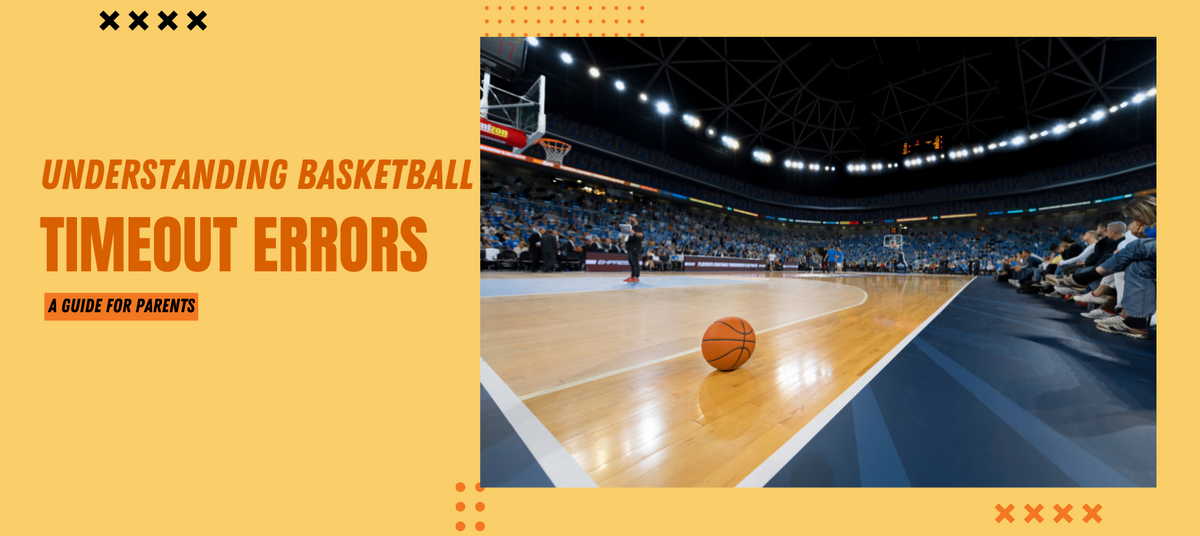
Understanding Basketball Timeout Errors: A Guide for Parents
|
|
Tempo di lettura 5 min
|
|
Tempo di lettura 5 min
Picture this: the tension is palpable, the clock is winding down, and your young basketball star has the ball in their hands, ready to make a game-winning play. But then, a whistle blows – a timeout has been called... by the wrong player. This, my friends, is the dreaded 'basketball timeout error,' a blunder that can make or break a game and leave parents scratching their heads in confusion.
While we often focus on the exciting aspects of the game—the three-pointers, the steals, the buzzer-beaters—it's crucial to understand the rules that govern the flow of play, and yes, even the timeouts. As a seasoned basketball parent who has witnessed countless nail-biting finishes, there's nothing quite as frustrating as a game decided not by skill or strategy, but by a simple misunderstanding of the rules. It's vital to acknowledge that these mistakes happen, and they offer valuable learning experiences for players and coaches alike.
So, before your star player costs your team the game with a mistimed timeout plea, let’s break down exactly when timeouts are permitted, who can call them, and what happens when a basketball timeout error throws a wrench into the gears of a close game. In basketball, a timeout is a brief pause in play requested by a team or granted by officials.
During this break, teams can strategize, catch their breath, or make substitutions. Simple, right?
It's essential to understand that only certain individuals have the authority to request a timeout during a basketball game. Here's the breakdown:
Alright, now to the heart of the matter – what are the repercussions when a player commits a basketball timeout error? Well, just like in the real world, mistakes on the basketball court have consequences. According to the rules set by governing bodies like the NFHS and NCAA, a basketball timeout error falls under the umbrella of 'technical fouls,' specifically classified as correctable errors.
Remember that sports psychology journal mentioned earlier? They also did research on technical fouls, and these fouls often lead to a whopping 50% decrease in a team’s overall morale and performance, especially when it’s their own mistake that leads to those lost points.
So, while a basketball timeout error may seem minor, the ripple effect on the game can be significant.
When a player incorrectly calls a timeout – during a dead ball, if the team has none remaining, or perhaps shouts to the scorer's table instead of properly signaling to a referee – a technical foul is whistled. This grants the opposing team one free throw. In some leagues and tournaments, after the free throw, possession of the ball is also awarded to the opposing team, which can make all the difference in those final, heart-stopping moments.
Now that you’ve got the low-down on basketball timeout errors, let’s shift gears to how to avoid them. Coaches should implement these preventative measures during practices and pre-game huddles:
A timeout in basketball is like hitting the 'pause' button on the game. It’s requested by a team (or in specific instances by the officials) to momentarily stop play, offering an opportunity to strategize, rest, or regroup.
Teams often use them to interrupt their opponent’s momentum, make substitutions, or huddle to plan their next move.
Calling a timeout when your team has exhausted their allotted time results in a technical foul. This is a classic basketball timeout error that can leave fans groaning in frustration. Not only does the opposing team receive one free throw attempt, but the clock doesn’t even stop.
In many leagues, possession is then awarded to the team that was fouled.
Both players and coaches need to signal for a timeout correctly, or they could find themselves slapped with that dreaded basketball timeout error. Coaches usually make a ‘T’ with their hands, while players must be quick on their feet. Players are only allowed to verbally request a timeout during live-ball situations, while the ball is in play.
Players cannot, however, walk up to the scorer’s table and chat about timeouts. That's a big no-no.
If the score remains deadlocked after an overtime period, it means another overtime period. You’ll go through the excitement and nail-biting intensity of an additional overtime until a victor emerges.
Think of it as a basketball bonus round.
Understanding the ins and outs of the timeout rule, and recognizing the pitfalls of a basketball timeout error, is about more than just points on a scoreboard. It highlights the crucial role that clear communication, strategic decision-making, and a firm grasp of the rules play in the overall success of a basketball team.
When players and coaches are on the same page regarding this fundamental aspect of the game, they’re setting themselves up for success both on and off the court. Remember, these rules aren't meant to stifle the excitement but rather ensure a fair and engaging contest for all.
Basketball Timeout Errors. Basketball Timeout Errors. Basketball Timeout Errors. Basketball Timeout Errors. Basketball Timeout Errors.Basketball Timeout Errors. Basketball Timeout Errors.Basketball Timeout Errors. Basketball Timeout Errors.Basketball Timeout Errors. Basketball Timeout Errors.Basketball Timeout Errors. Basketball Timeout Errors.Basketball Timeout Errors. Basketball Timeout Errors.Basketball Timeout Errors. Basketball Timeout Errors.Basketball Timeout Errors. Basketball Timeout Errors.Basketball Timeout Errors. Basketball Timeout Errors. Basketball Timeout Errors. Basketball Timeout Errors. Basketball Timeout Errors. Basketball Timeout Errors. Basketball Timeout Errors.Basketball Timeout Errors. Basketball Timeout Errors. Basketball Timeout Errors. Basketball Timeout Errors. Basketball Timeout Errors.Basketball Timeout Errors. Basketball Timeout Errors. Basketball Timeout Errors. Basketball Timeout Errors.
This site requires cookies in order to provide all of its functionality.
